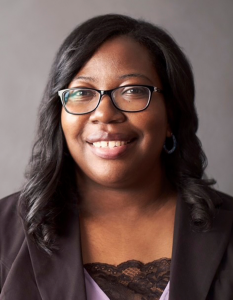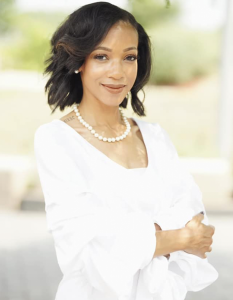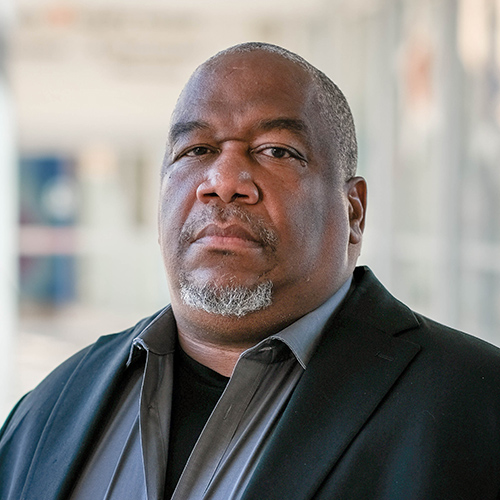This year’s Black Maternal Health Week theme is “Our Bodies Belong to Us: Restoring Black Autonomy and Joy!” What does the theme mean to you?
Ruth Richardson: The active restoration of Black autonomy and joy resonates with my soul. In a nation and a state where we experience compounding traumas and social media is inundated with visions of our pain, the manifestation of Black joy is a form of active political resistance.
We have a long history and legacy in this nation of surveillance, exploitation, containment and violence against Black bodies. We too have a long history of rebellion against injustice and in this 400-year journey of liberation Black joy has been ever present as a defiance against systems that seek to dehumanize us.
Moreover, our oppressors are on a mission to attempt to steal our joy. Our unapologetic expressions of Black joy are an exercise in humanity, restoration, resistance and healing.
Brittany L. Wright: When we talk about Black Maternal Health, it’s inevitable that we address the stark racial health disparities that exist, the unjust treatment of Black birthing parents and the ways in which our families are put under duress to be sustainable from birth.
AND. It’s imperative that the love, joy and sanctity of birthing be lifted up just as much as the harrowing data points. Black families are birthing and creating life in spite of medical bias, white supremacy, patriarchy, homophobia, ableism and the myriad of ways that we experience violence and are subjected to the gaze of being “othered.”
Despite all those things, still we rise and bring forth life into the world and it deserves to be celebrated. Our birthing experience is more than just pain. Our bodies are more than the trauma we experience. Black joy is revolutionary, it’s defiant and it’s something that no amount of bigotry or hatred could ever take away. We deserve that autonomy over our wellness, and we’re holding that in our bodies where we both experience and produce joy. We demand that autonomy in our birthing spaces, and we’ve arrived at a tipping point, where in spite of the many complexities of being a Black birthing parent, we’re reclaiming and defining what safe birthing space looks like for us.
Black joy and autonomy is birthing justice in action, and it’s beautiful to see Black families reclaiming something so sacred.
What should everybody know about the stark maternal health disparities Black mothers experience?
Brittany L. Wright: These disparities were created by design. It is impossible to address the racial health disparities of today without addressing the structural and historical racism that permeates throughout the medical field.
It’s also important to note that birthing outcomes for Black mothers haven’t always been the way they are now. Birthing outcomes during the era of Granny Midwives were far better than they are today, and many of the practices that were used in those times were beyond medical, they were spiritual and cultural. Forcing mothers of any race to birth outside of their spiritual and cultural practices is violence, and the conditions that we ask families to birth in today must be evaluated to incorporate our ancestral knowledge and cultural traditions.
The last thing I’ll share is that we need more practitioners of diverse backgrounds in the workforce. Infant morbidity decreases significantly when babies are cared for by doctors who look like them. Maternal mortality decreases significantly when doulas and other advocacy practitioners are in the room to hold space for the birthing parents voice and needs. If you’re a Black or Indigenous person who is passionate about birthwork, you should consider entering the workforce; it’s critical to shifting outcomes and the overall birthing experience.
Ruth Richardson: What everyone should know is that it simply doesn’t have to be this way. The outcomes we see are not surprises, but predictable outcomes of a system working just the way it was designed with deadly consequences.
When we say racism is a public health crisis in the context of Black maternal health, it is a long overdue acknowledgment of the fact that these disparities are wholly preventable. Over 85% percent of pregnancy-related deaths are preventable. Furthermore, the most severe morbidity events, which are commonly referred to as the near misses, where someone almost dies from a pregnancy related cause, are often preventable as well.
The fact is that we live in a society that tolerates this crisis where anti-Blackness continues to dehumanize our communities with deadly consequences.
What is an equity action people inside health care should take to address the disparities?
Ruth Richardson: The utilization of midwives and doulas is known to improve outcomes. Racism needs to be acknowledged and identified as an adverse patient experience. It is also important that providers listen to their patients and acknowledge their concerns and pain. There are too many examples of heartbreaking stories of Black voices being dismissed during the most vulnerable times during pregnancy, childbirth and the postpartum period.
Brittany L. Wright: Listen to Black women, Black men, Black trans folk and Black gender non-conforming people. Listen to Native women, Native men, Native trans folk and other two-spirited people.
Equitably compensate doulas, respect them in the birthing space, and work to create more pipelines for Black and Indigenous doulas and midwives to enter the field and stay in the field. Evaluate policies and practices that prevent doulas, birth companions and other advocates from being in the room with patients, evaluate bedside manner and mandate ongoing bias training that addresses implicit bias and structural/historical racism. Evaluate the social determinants of health and how your institution can support family sustainability and wellness beyond the birthing space.
What is an equity action people outside of health care can take?
Brittany L. Wright: Listen to Black women, Black men, Black trans folk, and Black gender non-conforming people.
Listen to Native women, Native men, Native trans folk, and other two-spirited people.
Black and Indigenous people have the worst birthing disparities, especially in Minnesota. Build authentic relationships and actively listen to how you can be a better ally. Fund their culturally specific birthing practices, advocate for them to have adequate insurance coverage, center their needs and bring them into rooms of influence to share their lived experience and inform future policies, programs and practices.
Ruth Richardson: At the Minnesota Capitol I have been fighting for years along with members of the Black Maternal Health Caucus for the state to extend its Maternal Mortality Review to include morbidity reviews.
More than 60,000 people in the United States experience morbidity events during labor or delivery that have serious short- or long-term implications on their health and well-being.
Much like maternal mortality, the vast majority of these severe complications are preventable with timely and appropriate care.
While this bill was introduced once again and on the first day of session it still has not received a hearing and made no movement at the Capitol in either the House or Senate Health Committees.
The evidence is clear that there are concrete steps we can take to prevent this crisis. Continuing to show up and speak out at the Capitol using our collective voices and power is essential. One concrete step you can take right now is to reach out to the chairs of the Health Committee to share your support for extending the state’s Maternal Mortality Review Committee to include morbidity.
Final thoughts
Brittany L. Wright: Our families deserve a chance to thrive. Creating safe and equitable birthing spaces is the bare minimum. I believe that better outcomes are on the way, but they require deliberate and intentional investment, evaluation and accountability. Mission statements without strategic plans, without measurable outcomes, are like thoughts and prayers, they’re kind and symbolic gestures. In 2023 and beyond, symbolic gestures are no longer acceptable. Policy reform, investment and results-based accountability can save lives. Each of us within our respective spaces of influence has to decide if we’re going to continue as advocates of symbolic gestures or agitators of disruption and champions for true birthing justice.
Ruth Richardson: Minnesota has made some progress and some important steps forward with the Dignity in Pregnancy and Childbirth Act, expanding Medicaid coverage, expanding the Integrated Care and High-Risk Pregnancy Program, and expanding coverage for postnatal care to ensure more comprehensive care during the postpartum period. We still have significant work to do as a state to address this preventable crisis.
Thank you, Brittany and Ruth, for your commitment to reducing and eventually eliminating Black maternal health disparities; for working to make Minnesota a healthier place for all its residents.
To learn more about maternal mortality in our state, read Minnesota’s first maternal mortality report.



